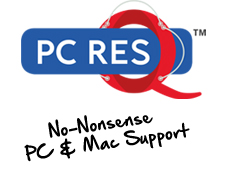Browsing the web can be a dangerous place to visit, if it’s not used sensibly.
There are so many unscrupulous websites waiting to grab your attention, and ultimately, your personal details.
It’s a bit like walking down a well-lit high street, versus taking the shortcut down a back alley, which could potentially lead you into trouble.
So sticking to the mainstream and secure websites, is a good rule to abide by. But no matter how careful you are, your details could end up in one of the darker alleys, or to be more precise, the Dark Web.
The Dark Web is used by criminals to carry out illegal activities online, such as selling weapons or drugs, but it was originally created by the US government to allow spies to exchange information anonymously.
And just to put your mind at rest, using Google Chrome, Microsoft Edge, Mozilla Firefox or any other internet browser, doesn’t utilise the Dark Web; it’s inaccessible and hidden from these browsers.
If you have McAfee, Norton or some other kind of protection, you may have seen notifications advising that you upload your personal details to their servers, and they’ll notify you if any of this information has been leaked on to the Dark Web.
I personally don’t think it’s a good idea – I’m sure the security companies have their best intentions, but I don’t think it’s wise to upload your personal information unnecessarily, no matter how reputable a company appears to be. Instead, I have a far safer option…
Have I Been Pwned is a website that puts you in control, and once your email address is entered, it’ll let you know if your details have been included in a data breach.
If it lists one or more websites claiming that your email address and password was included in a data breach, I’d advise that you change the password for this website ASAP.
Data leaks happen; it’s one of the downsides of the web. And more often than not, these leaks have nothing to do with you being irresponsible. Companies can suffer embarrassing data breaches, either through having their servers hacked, human error, or staff misconduct.
There are strict obligations on companies to report data breaches as soon as possible, and these reports identify what accounts have been affected.
So to check if your email address has been used on the Dark Web, click here.
And here’s my rules for setting up passwords…
1) Use a different password for every website.
2) Choose a minimum of 8 characters in length with a combination of numbers, uppercase and lowercase letters, combined with special symbols such as ! or #.
3) Ensure your banking password is very different to all other passwords.
P.S. Regarding point 1 above, if you think that having a different password for every website is a complete nightmare, then have a read of the system I’ve been using for years in the link here.





